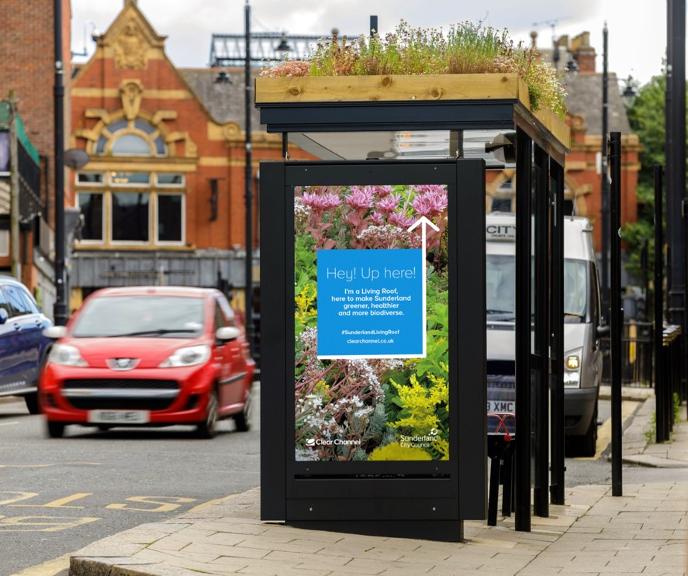Living roof bus shelters are looking blooming lovely!
Sunderland's living roof bus shelters are adding a pop of colour to the city, as more are appearing across Sunderland making the city a cleaner and greener place to live.

The bus shelters with living roofs, also known as 'Bee Bus Stops' are now in full bloom, with flowers improving the look of Sunderland's streets and supporting bees and other pollinators.
They have been specially designed by Clear Channel and expert ecologists to support native biodiversity, help create healthier local communities, and bring greenery back into urban areas. Each is planted with a mix of native wildflower species selected to aid and support bees and other pollinators, whose numbers are sadly in decline.
The living roof bus shelters were first introduced outside the University of Sunderland and on Chester Road, but Sunderland City Council and Clear Channel are aiming to install 90 living roof bus shelters across the city.
The living roofs also help provide natural cooling to counteract the effects of 'urban heat islands', help absorb rainwater to help alleviate flooding, and filter fine dust particles from the air. They sit atop brand-new shelters, finished to be in keeping with the city's existing shelters, and built using a range of recycled materials.
Councillor Claire Rowntree, Sunderland City Council's Cabinet member for Clean, Green City, said: "These new Living Roof bus shelters are just one of the ways that we are supporting important pollinators like bees and moths, which face threat due to loss of habitat but are so important for our environment. This goes hand in hand with planting wildflowers in our parks and cemeteries to support these habitats.
"Now we're in summer, the bee bus stops are in full bloom and they are also looking beautiful and brightening up the city's streets."
As well as the replacement of the shelters, Clear Channel have also introduced free-standing advertising units to the city centre, with new, high-tech 'Waferlite' digital units, which are thinner and 50% more energy efficient than the existing digital screens




